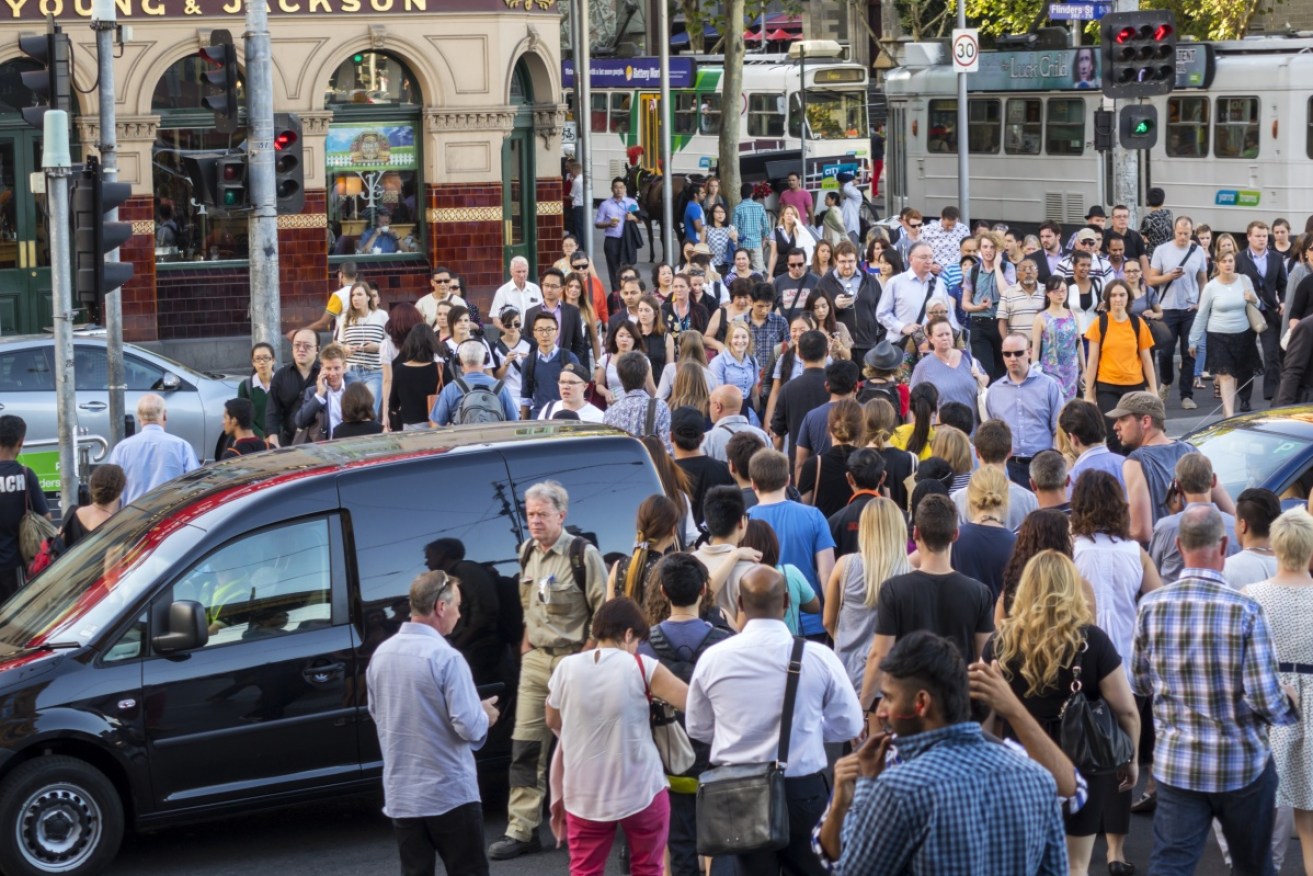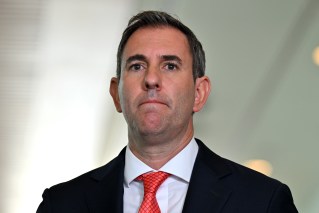‘Poor drivers, bad road design’: What’s behind the spike in pedestrian deaths?

Victoria Walks' CEO Ben Rossiter says poor road design and driver behaviour is to blame for rising pedestrian deaths. Photo: Getty
There has been a rise in pedestrian deaths so far this year and at least one pro-walking group has pointed the finger squarely at motorists and road design.
Victoria, Queensland and NSW have all seen notable rises in the number of pedestrian fatalities in 2018 compared to the same period last year, while South Australia is on par with previous trends.
While much has been said about the rise of smartphones distracting people crossing roads, Victoria Walks CEO Ben Rossiter said it was wrong to blame them.
“I think it comes down to two things as research clearly shows: it’s poor road design or driver behaviour,” he said.
“We know that some drivers don’t have a really good understanding of their obligations to give way when turning.”
Victoria Walks commissioned research into senior citizens and pedestrian deaths, and Mr Rossiter said the result was clear.
“We found the most common crash scenario is right-turning vehicles and the second most common is left-turning. They’re both where drivers should be giving way,” he said.
He added that roads were designed for people in cars – what he dubbed “canned people” – and pedestrians – “fresh people” – were a second thought.
“Things like our traffic timing, the timing of our lights are really bad for pedestrians,” he said.
“The average traffic light speed for a walker is 1.2 metres per second, but seniors travel on average about 0.9 metres per second.
“They don’t have enough time to get across at the formal crossing.”
Mr Rossiter advocated lowering the speed limit in suburban areas to a uniform 40kph, and as low as 20kph in parts of major cities.
Morning commuters told the ABC they sometimes felt unsafe crossing busy city streets, but added it wasn’t just drivers to be wary of and that they took risks themselves.
“I find you have to be wary of cars and bikes, because sometimes bikes can be in a bit of a hurry and they’ll tend to not look where they’re going.”
“Road rage is on the increase, definitely. I think everyone’s just in a hurry. Nobody ever thinks about other people.”
“I feel pretty safe. Occasionally you do risky things though because you have to try to catch the tram and they never wait for you.”
“You do tend to see [aggressive drivers] and you do hear them hooting and going crazy and you’re like, ‘What’s going on?’ but there’s nothing you can do about it.”
“You just have to look and be aware of what’s going on around you.”
‘We have a culture of victim blaming’
Pedestrian deaths aren’t just a growing concern for Australia. Fatalities in the United States in 2016 jumped 9 per cent on the previous year.
Last year, authorities in Hawaii’s capital Honolulu introduced fines for pedestrians who texted while crossing at a traffic light, in what was believed to be a world first.
Police in some Australian states and territories can fine pedestrians $110 if they walk “without consideration to other road users”; however, there is no specific offence for using a phone while crossing a road.
“My gut reaction is pedestrian deaths are a huge problem, not just in Australia but elsewhere,” Michael Bradley from the Australian Automobile Association told the ABC when the Honolulu laws were announced.
“I think it is an interesting approach.
“I think obviously it’s going to cause some issues, not just from enforcement, but also where do we stop on this front?”
Earlier this month, a 14-year-old girl was hit and killed crossing a road in Melbourne’s east, and Mr Rossiter said he was saddened to see some speculated whether she had headphones on at the time.
“We’ve got to be careful because often there is a culture of victim-blaming,” he said.
“[Headphones] have absolutely nothing to do with it if she was obeying the law, and all indications are she was.
“An example would be if a stationery car at traffic lights is hit by a vehicle from behind, we don’t say, ‘Oh, the driver was listening to music’ or, ‘They weren’t looking in their rear view mirror’.
“Yet when a pedestrian is hit on a crossing, we tend to look at how they’re at fault.”








